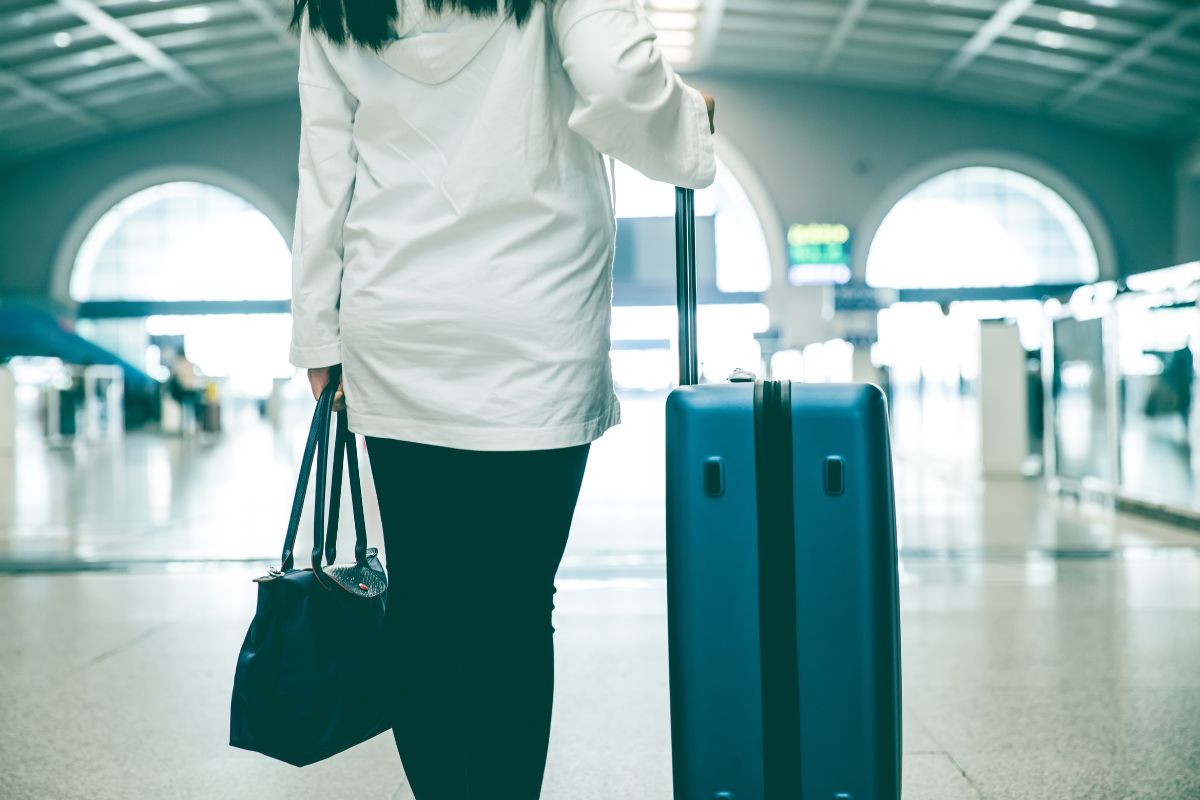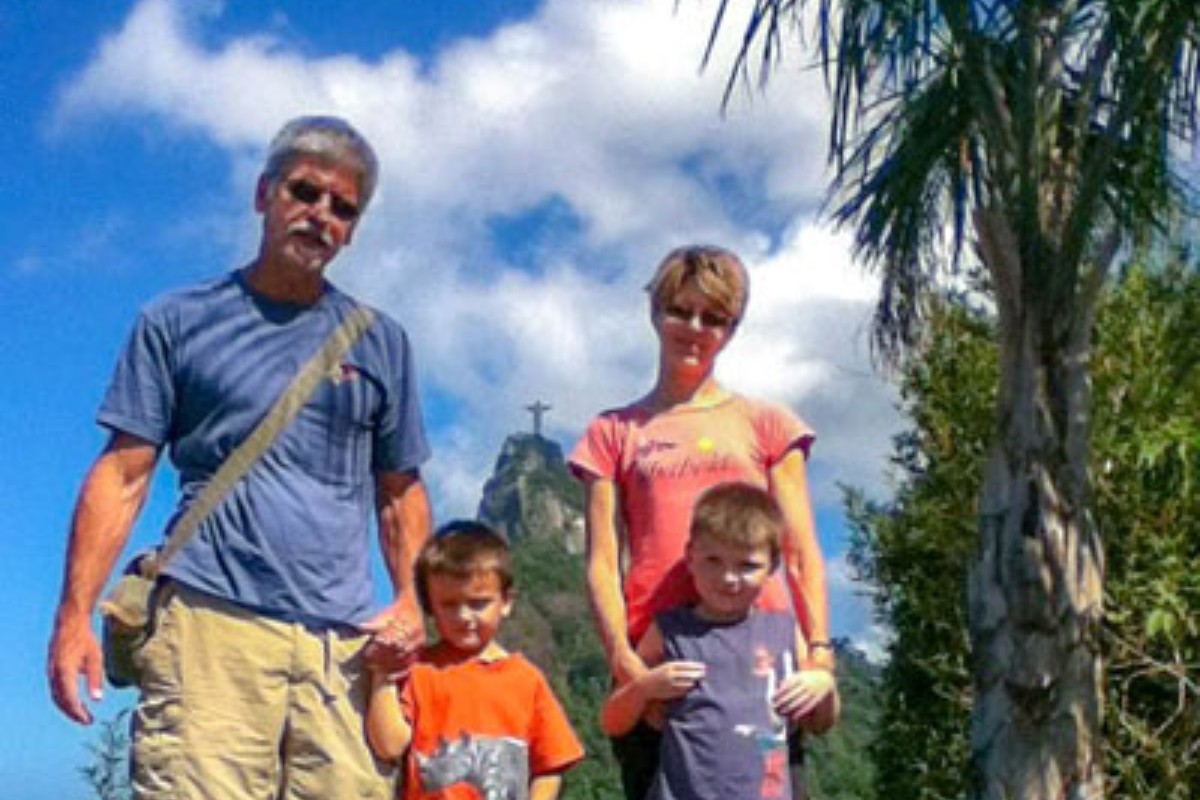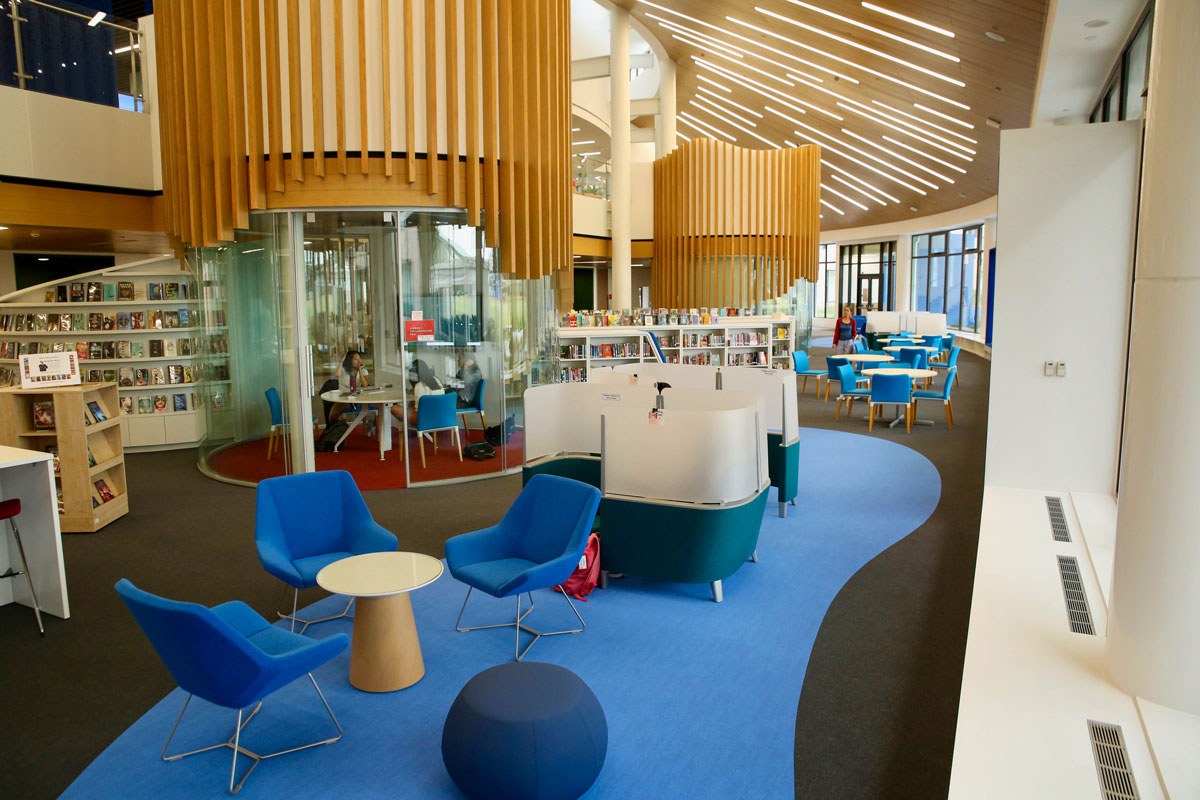Singapore: This Culturally Diverse and Vibrant City-State is a Destination You Won’t Want to Miss
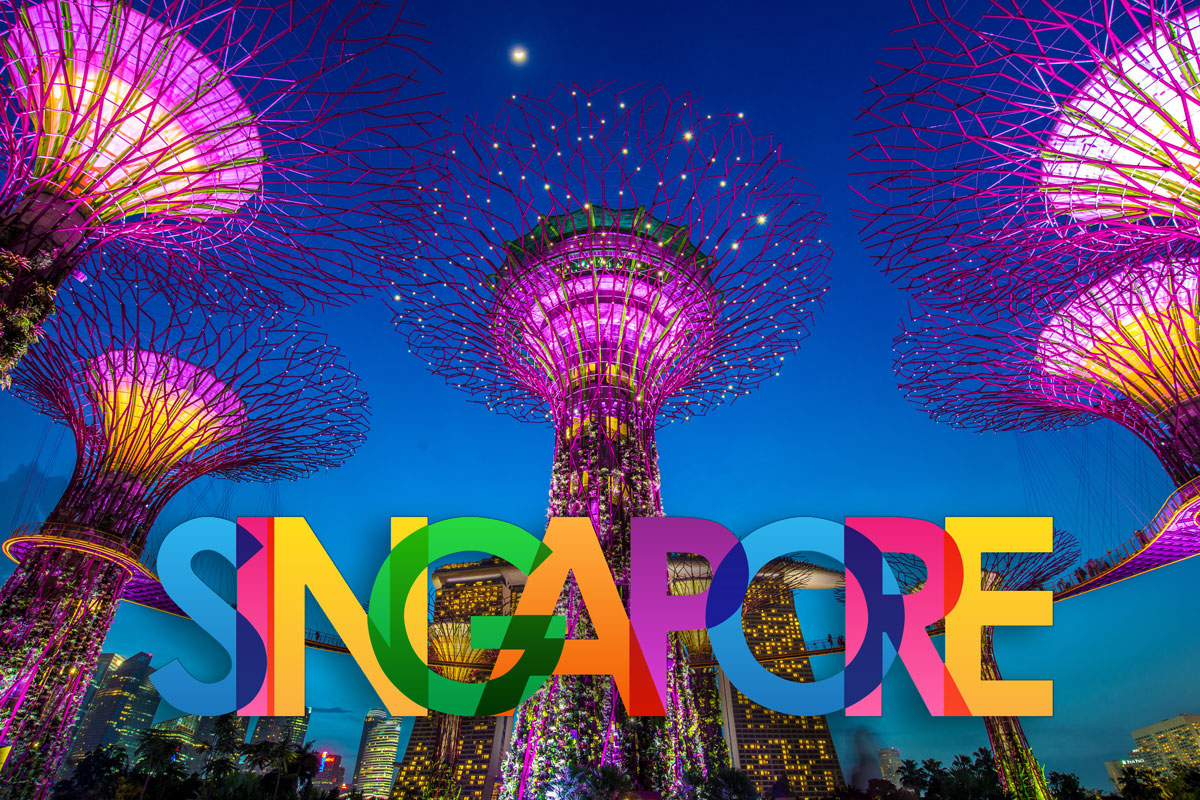
Last summer, my husband was offered a promotion that required moving our family of four from Texas to Singapore. While we had traveled to Asia before (even spending a year in Tokyo), this assignment was different as it was more open-ended and our kids were now school-aged. We didn’t know entirely what to expect or the effects this move would have on our family, but we were certain that it was the right move for my husband’s career.
After one year of living as expats in Singapore, I can now confidently say this move was the right decision, both personally and professionally, as it has brought unimaginable enrichment and growth to every member of our family. This culturally diverse and vibrant city-state is a destination you won’t want to miss. Whether you are planning your visit or considering a move like we were, here are some guides and tips that will help you unravel the mystery of the lion city.
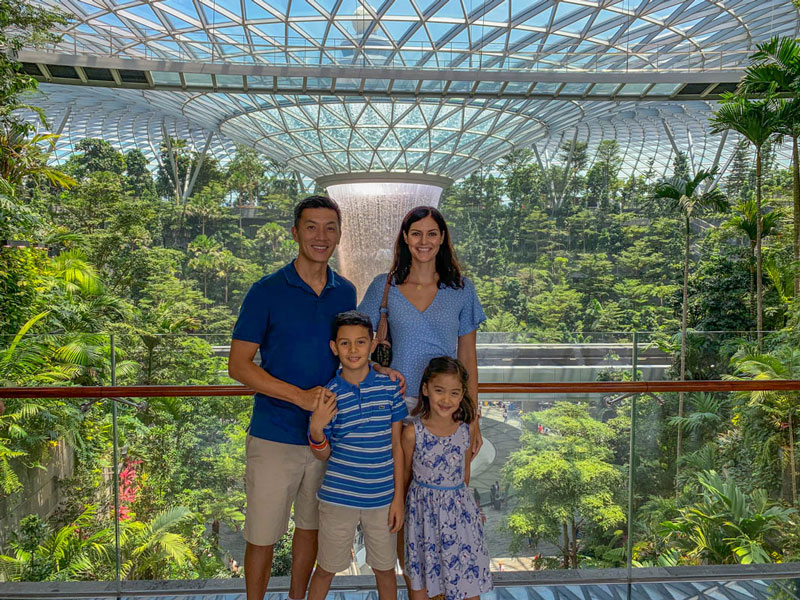
Geography
Singapore is a sovereign island-nation located just off the southern tip of Peninsular Malaysia in Southeast Asia. It’s not a large country (about half the size of Los Angeles) but boasts one of the the highest per-capita GDPs (Gross Domestic Product) in the world. The low crime rate and high rankings for education, technology, health care, and overall quality of life make Singapore an attractive place to live. The island is divided into five regions: Central, North, North-East, East, and West. Within these regions are 28 distinct districts that offer quite a different living experience. Due to the limited land and real estate, the majority of expats and locals alike live in high rise flats. While not for everyone, the high rises offer a more social living environment, community amenities (pools, playgrounds, tennis courts, BBQ pits, etc.), security, and a lot less maintenance then renting or buying a landed house.
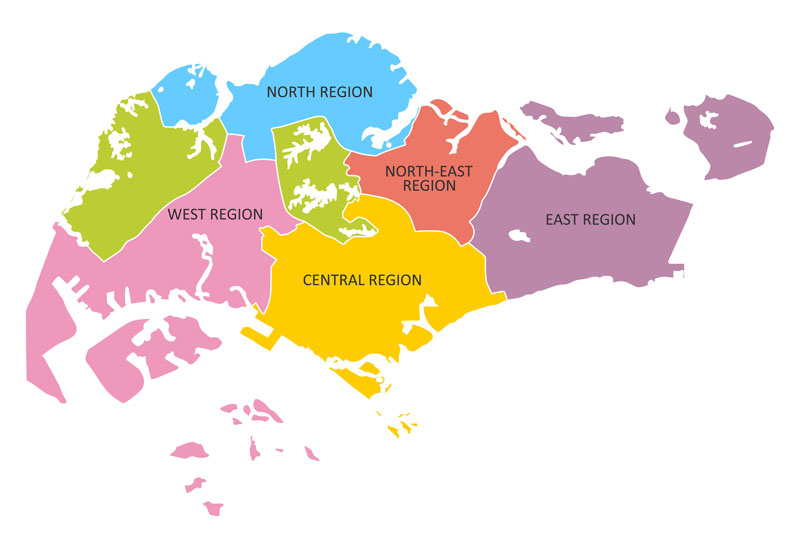
Living in Singapore
Deciding on where to live can be a challenging task, especially if you have school-aged children to consider. Our children’s school location and my husband’s work location were on completely opposite sides of the island, so it made sense to search for an area somewhat in the middle. Because traffic and congestion can sometimes be an issue in Singapore, start by checking your family’s daily commute times and look to zones that offer the quickest transportation back and forth between home and work or school. After that, consider where the nearest public transportation would be and any restaurants, grocery stores, shops that lie within walking distance.
If an expat community is important to you, then chances are you will want to stay in the central area or the Central Business Districts (CBD) of 9, 10, or 11. The CBD is the most densely developed area in Singapore with the highest number of public transport options and the shortest downtown commutes. However, living in the heart of the city center also comes with the highest cost of living on the island. If the concrete jungle isn’t for you, then head over to the East Coast district 16, home to the largest park in Singapore, East Coast Park. Here you can enjoy numerous outdoor activities such as sailing, cycling or rollerblading.
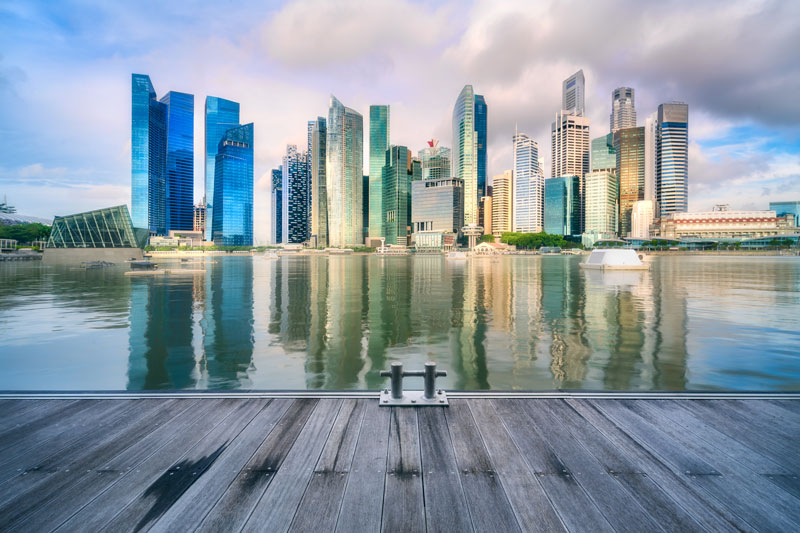
If you’d rather shop till you drop, then Orchard Road (District 9) has got you covered. Craving ethnic food and rich cultural experiences? Try Chinatown or Little India. More of a thrill seeker? Nicknamed the “state of fun” is Sentosa island. Located in the central region of the country, here you will find many exciting events and attractions for all ages. From the beautiful beaches to the theme parks (Universal Studios, Adventure Cove Waterpark and Resorts World), Sentosa has something for everyone. We often frequent Tanjong Beach for its sand volleyball courts, but there’s also a beach club that serves Instagram-worthy cocktails if relaxation is more your speed. Be sure to check the calendar as Sentosa hosts some events that your family won’t want to miss. This past summer we enjoyed the Pokemon Festival (with kids games, activities and character meet and greets) and the Sentosa Sansation (where gigantic hand-carved sculptures are created on the spot and then displayed for admiration). These events were a huge hit with our two kids, and best of all they were both completely free of charge! Consider what your ideal experience would be and try to find something that checks most of those boxes, but in the end, Singapore is a small place and getting around is not difficult.
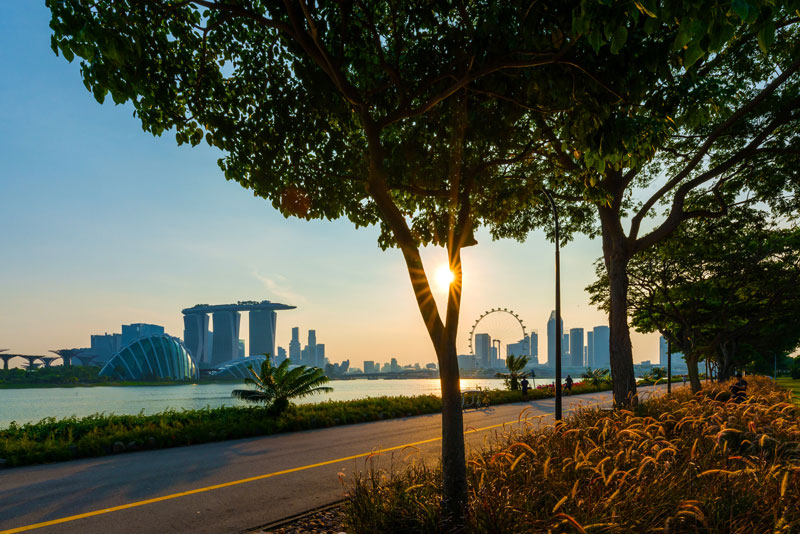
Attractions and Destinations
There are many attractions in Singapore to captivate and entertain you and your family. The first one you will see upon your immediate arrival to Singapore is Jewel at Changi Airport. Far from a regular airport, Changi has made itself a local destination to flock to even when you aren’t boarding a flight. There’s the suspended high nets (three stories off the ground), discovery slides, canopy mazes, and the largest indoor waterfall in the world. While admission to the waterfall is free, you must purchase tickets to experience some of the attractions but they are reasonably priced and very much worth the cost.
Another must-see attraction is the Gardens by the Bay. This area encompasses a handful of Singapore’s iconic landmarks, most notably the Supertree Grove, Cloud Forest, and the Marina Bay Sands hotel. The Supertrees have light shows that air twice nightly at 7:45 and 8:45 p.m. Get there early to enjoy the sunset views of the Gardens by the Bay before grabbing your seats for the show. For a more elevated view, buy tickets to go up to the OCBC skyway where you can watch the show amidst the supertrees themselves while enjoying the glistening cityscape night views.
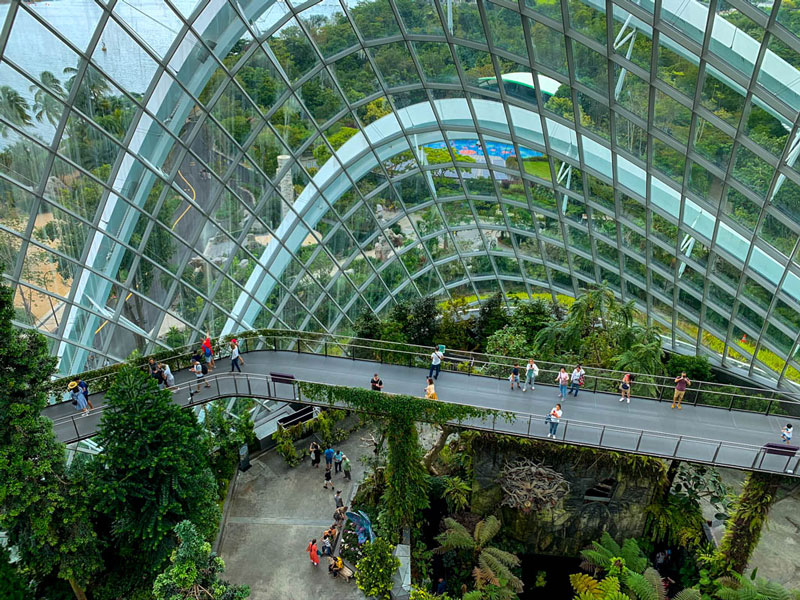
Next up is the Singapore Zoo. Tripadvisor has ranked the Singapore Zoo the fourth best in the world and the best in Asia, and after going, we definitely agree with that statement! Set on 220 acres in Singapore’s rainforest habitat, the zoo also utilizes an “open concept” layout, employing glass and hidden moats to maximize the guests’ viewing experience. After you’ve finished at the zoo, head to the River Safari where you can enjoy boat rides, gigantic tanks, and the memorable Giant Panda exhibit. If you have time, it’s worth making a separate visit to the night safari which is nearby and wildly popular as well.
If you would like a more authentic look at Singapore’s jungle wildlife, then spend the day in Palau Ubin. Pulau Ubin is one of the last areas in Singapore that has been preserved from urban development, concrete buildings and tarmac roads making it a real-life exhibit of what the country looked like back in the 1960s. Nature lovers, thrill-seekers, and families alike flock to the island to enjoy the lush forests and exotic wildlife. Boat fares run $3 a person for a single trip and each ride takes about 15 minutes. There are no ATMs on the island, so bring cash if you plan on renting bikes during your visit. Upon arrival, most people opt to rent bicycles ($12 for the whole day) for quicker exploration of the island’s attractions, but strolling leisurely by foot is always an option, too. Whichever you decide, keep your eyes peeled for the exotic birds, wild boars, and monkeys who call this island home.
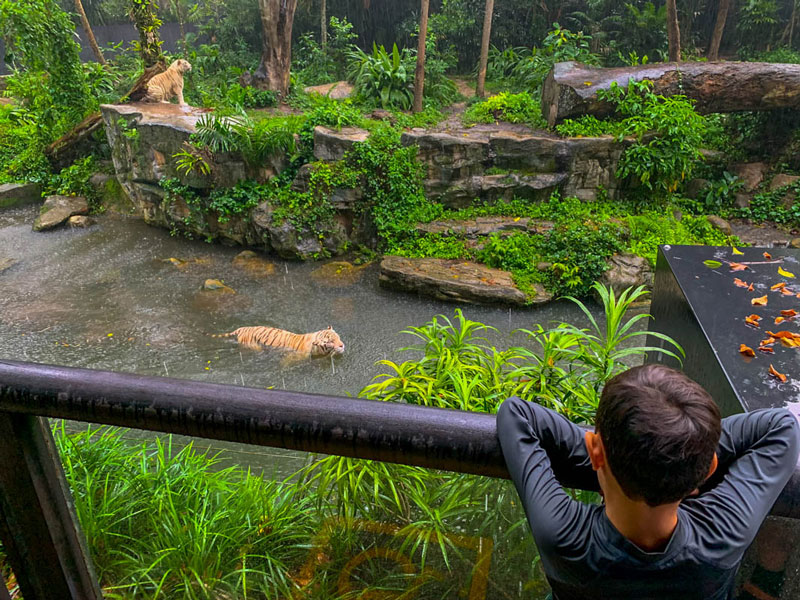
Another memorable moment from our time on Pulau Ubin was the breathtaking view at the top of Puaka Hill trail. Bukit Puaka (or Puaka Hill) is the tallest point on Ubin at 75 meters high. After a 15 minute upward hike, you reach a small lookout spot with sweeping views over the Ubin Granite Quarry as well as the west side of Pulau Ubin even extending into Johor, Malaysia. On a clear day, you may see as far as Changi, or better yet into the towering buildings of the business district on the mainland!
No Monkeying Around!
Before we had any wildlife encounters of our own, we had already heard stories from locals about monkeys preying on unsuspecting visitors – monkeys grabbing cameras, phones, or the jewelry right off one’s neck before disappearing deep into the forest. With this in mind, I opted for simple (if any) jewelry that day and made sure we secured all valuables in our backpack before stepping foot on the island.
When we biked up to an area with monkeys, I felt at ease knowing we had already taken these precautions. After observing the monkeys interact with each other and snapping some long-distance photos, a statuesque monkey sitting on the trail’s fence post caught my attention. I approached him slowly and with much curiosity, as my husband whipped out his phone camera and urged me to get closer. We then made eye contact at a little over an arm’s length away while I was holding my smile for the camera.
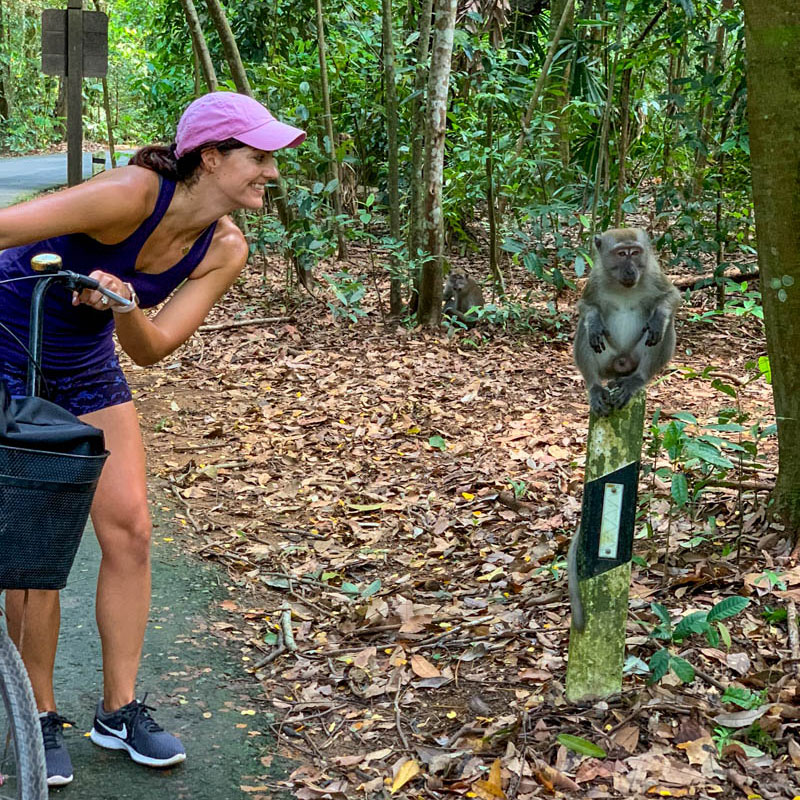
The monkey did not appreciate my happy gesture, loudly hissing at me while showing me his fangs! I felt a surge of fear imagining him mauling my face, so I immediately began riding my bike away from him, thankful for the swift escape I otherwise wouldn’t have had. Imagine my surprise when I looked back to see the monkey was still trailing me for a short while before eventually turning around! Apparently, in monkey etiquette, I had just done two things wrong. I had smiled at the monkey, which he took as a sign of aggression and me asserting my dominance. Then when he stepped up to my challenge, I had “backed down,” thus declaring him the “winner” in my unintentional showdown.
Through this experience, I had learned my lesson and I was thankful that nothing else happened. I advise you (and your group) to brush up on your monkey etiquette before your arrival to avoid any mishaps that would ruin your otherwise fun day and to save the “monkey and me” photos for the zoo.
Getting Around
Now that you are familiar with the different parts of Singapore and have an idea of its attractions, let’s talk about how you will be getting around the island. The most cost-effective way is by using the SMRT (Singapore Mass Rapid Transit). Public buses run daily from 5.30 a.m. to midnight, with rides costing as little as $.73 cents for the bus and $.83 cents for the train. Whether you are here as a tourist or a resident, if you want to use the SMRT then you will need to purchase an EZ-link card (a contactless smart card used for payment) before your first ride.
Having access to a car here (whether renting or owning) is considered a luxury as it is expensive to foot the bills that come with it (maintenance, gas, and parking, traffic tickets, etc.). While having a car (or hailing a taxi) can save you time during off-peak times of the day, during rush hour the train will be sure to reach your destination faster. If you don’t have access to a car but still want to be pampered with a private ride, a good option beyond a standard taxi service would be using a rideshare app such as Grab or Gojek, which work similarly to our Uber or Lyft services back in the States.
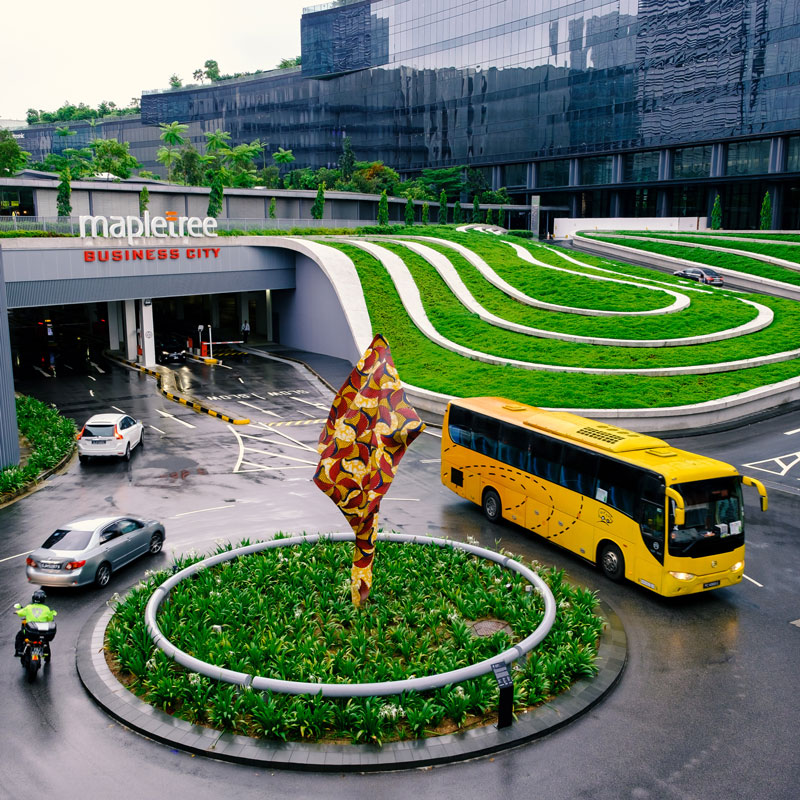
Culture
Singapore’s official language is English due to its British colonization; however, it is culturally Chinese, as 80% of the locals can speak Mandarin. Our kids now take daily Chinese classes at school and are able to practice in the hawker centers or markets. We feel lucky that we have a real life situation to use these language skills, but don’t have to 100% rely on them to survive on a daily basis.
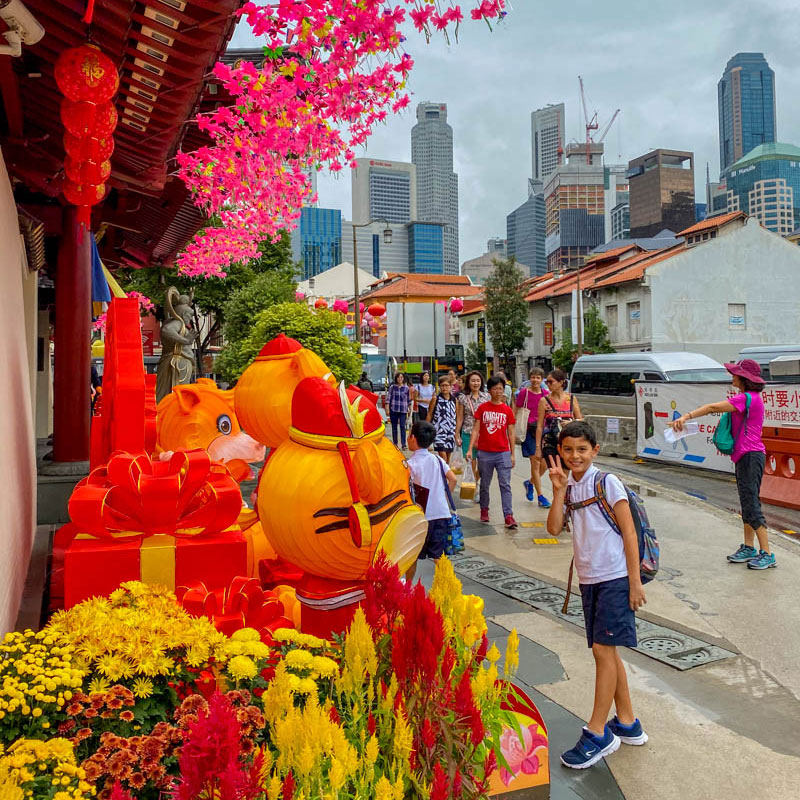
As far as holidays go, a couple big ones are the Hungry Ghost Festival, Mid-Autumn Festival and Chinese New Year. Soon after moving we experienced our first Hungry Ghost Festival. At the time, we had no idea what the Hungry Ghost Festival was, so when we stumbled upon an empty traditional chinese opera performance after dinner, we innocently assumed they were rehearsing before the next night’s performance. We found out later, they were actually performing to a crowd of ghosts and it is considered quite unlucky to disturb the ghosts’ show. Hopefully the spirits gave us a pass this time, as we had nothing but good intentions while we quietly observed this beautiful cultural display.
Mid-autumn festival celebrates the end of the autumn harvest with family gatherings, lanterns and mooncakes (I find it similar to Thanksgiving in the U.S.). The most popular holiday here is Chinese New Year. Chinese New Year marks the start of the new year based on the Chinese lunar calendar. The city is filled with lucky red decorations and hongbao (red envelopes) and oranges are exchanged in hopes of prosperity and good fortune in the new year. From New Year’s Day onward, traditional performances like dragon dances, lion dances, and imperial performances can be seen.
Food
Singapore is a foodie heaven with a melting pot of different cuisines, thanks to the Chinese, Malaysian, Indonesian and Indian influences. These dishes are decades old and have been perfected from generation to generation, who then serve them up in a tiny hawker center stall. Hawker centers are open air complexes with hundreds of food stalls. The food served here is equally inexpensive as it is delicious. As of this year Singapore has 58 michelin stars, with 33 of these being hawker stalls. Chinatown Food Centre was Singapore’s first hawker center in the world to receive a Michelin star and it is also the largest at over 260 food stalls. After the film “Crazy Rich Asians,” these Michelin starred hawker stalls gained even more popularity so get ready to queue.
There are so many tasty authentic dishes to try. Some of the more well known dishes here are: Chicken rice, Bak Kut Teh, Char Kway Teow, Satays, Chilli crab, Durian, Fried Carrot Cake, Laksa, Kopi and Kaya toast and lastly Cendol. If you are here for a limited time you might want to eat your way through Singapore, as it is really that good!
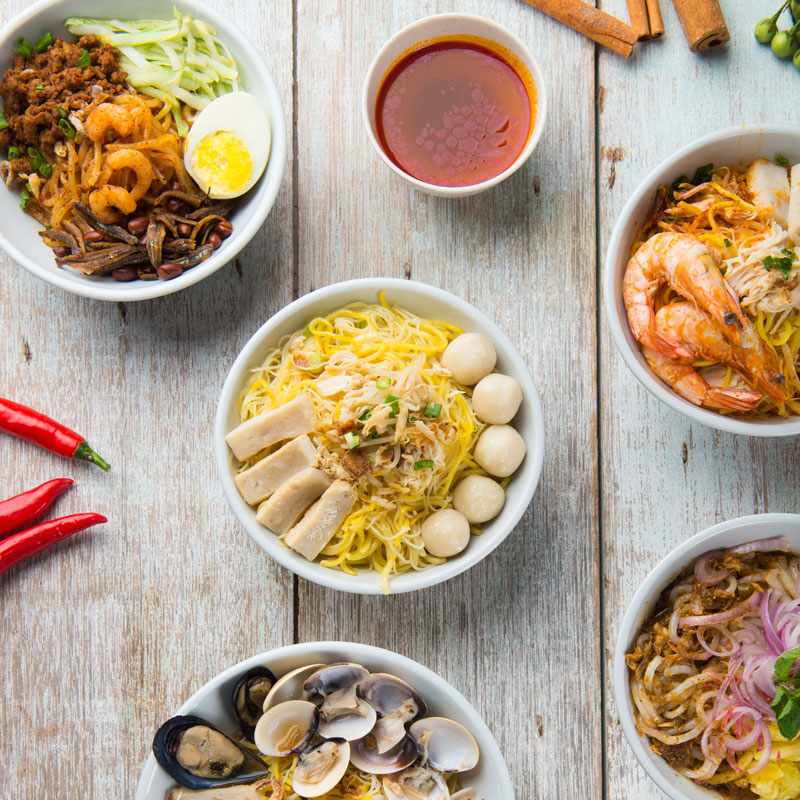
Schooling in Singapore
If you are moving to Singapore with children then you will definitely want to know what the school options are like in Singapore. Fret not, because Singapore is known to have world-class schools that provide a high-quality education for its students. Unless your child is fluent in Mandarin and can test into a local school, you will probably be considering private schools. Depending on where you are moving from and what type of teaching methods work for your child, you are sure to find your community here as there are many private international schools to choose from.
The two most well-known schools in Singapore for expats are Stamford American International School (SAIS) and Singapore American School (SAS). After a lot of research and in-person tours at both schools, we felt SAS was the right fit for our family and we have been very happy with our decision. Though it’s an American school, there are children from countries all over the world as well as local children who attend. The school makes a huge effort to embrace and honor this diversity year-round through its field trip destinations, school-wide celebrations, and by encouraging parent/grandparent volunteers to present their holiday customs/traditions to the class.
After living here for almost a year, one of the things we’ve come to realize is that location is not as important as we had initially thought, since the island is relatively small and the transportation options are plenty. However, having schoolmates and other expats nearby (if not living at the same place) has been a huge advantage. We love that the kids can bump into friends at the pool and get to have spontaneous playdates after school. Even now, the majority of our close friends’ children attend the same school or they stay at the same condominium as us. Knowing this, I would recommend prioritizing a sense of community for you and your family over the actual location on the island.
Making new friends and adapting to our new home has been easier for us than we would have assumed, and the school has played a big role in that. Since our arrival, our school has hosted expat talks and other welcome events that put us in contact with other families who are in the same position as we are. Finding this community of people who have also just moved, or have had prior expat assignments helped us a lot during the toughest couple of months immediately after our relocation (If you don’t have children, you may have to work a bit harder to put yourself out there via other networking groups).
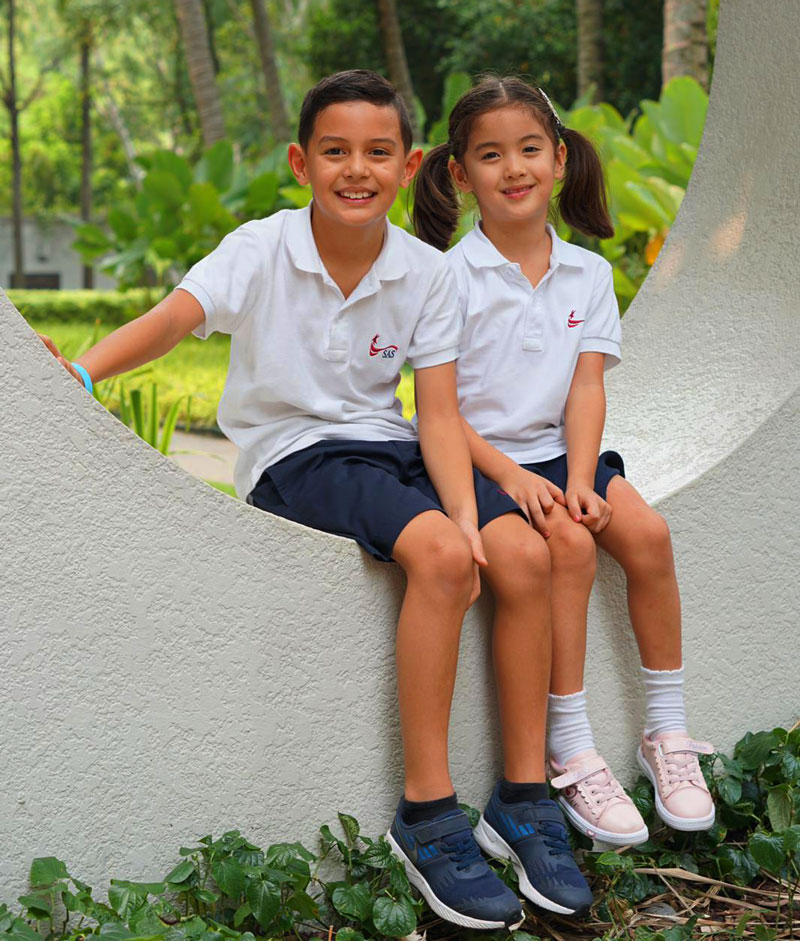
There are a range of feelings you or your children may have after moving and not everyone may feel the same way at the same time. Some members may be excited, while others are anxious or sad. The important part is to have open communication and to remind each other how lucky you are to have this experience and how you are not losing anything by moving, but you are gaining plenty of things. If you focus on the new friends, experiences and memories you’re making as a family, you’re less likely to feel blue. Remember, you can always keep in touch with your friends via Facetime to make the distance feel shorter, but you can’t go back once you’ve missed the opportunity.
Overall, this assignment has been fantastic for our family and we have no regrets in our decision to move here. Singapore is a very comfortable, diverse and exciting place to live. The city is safe, clean and brimming with things to do and explore for adults or children alike. Experiencing another country and its unique culture without having a language barrier to deal with has been the icing on the cake for us. The local culture, combined with its large international expat community, has given our kids a fantastic opportunity to experience diversity and gain a new perspective. We have never had so many friends from different countries and our kids are eager to discover more about their new buddies’ languages, religions and customs. At the formative years of 6 and 8 years old, they are starting to define their idea of the world, so what better way than to experience this first hand and not from a textbook? If you or your family are considering moving to Singapore or another destination, know that it may not be the easiest path but it will definitely be worth it. Carpe Diem!
This article is available and can be accessed in Spanish here.



